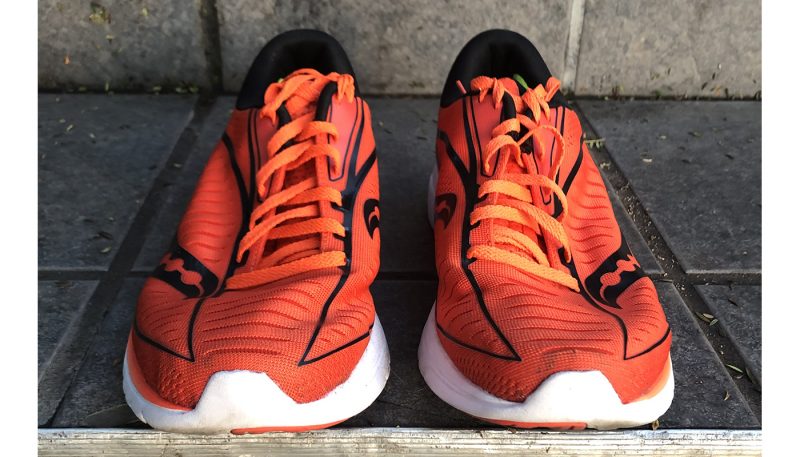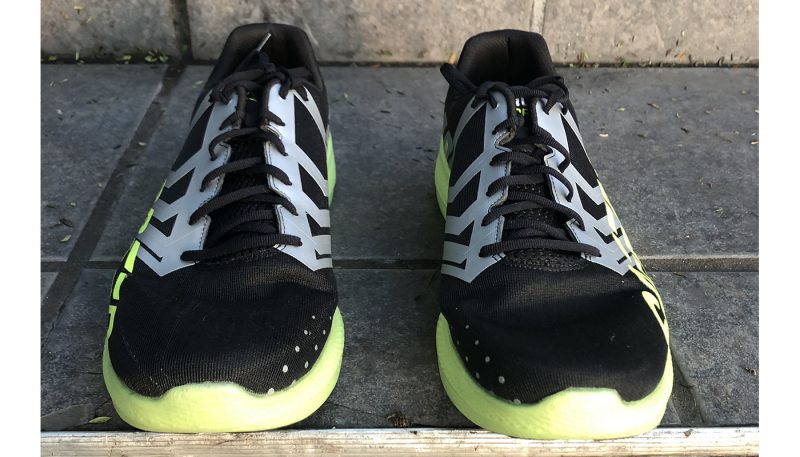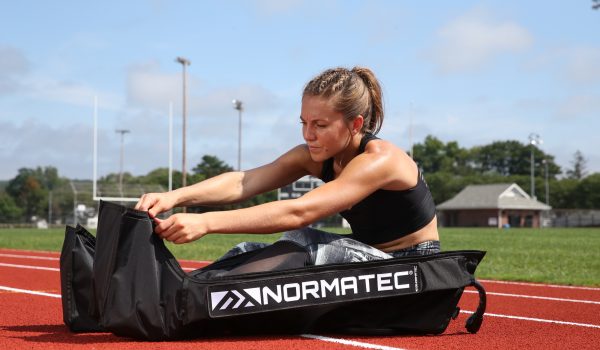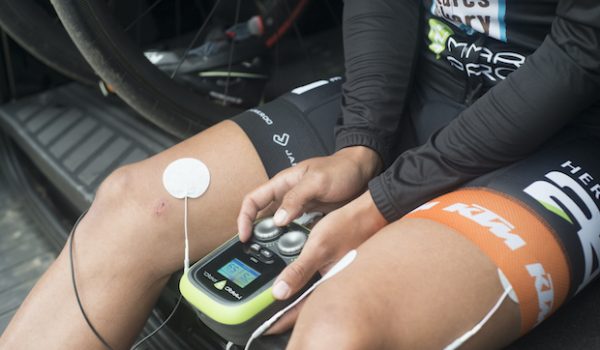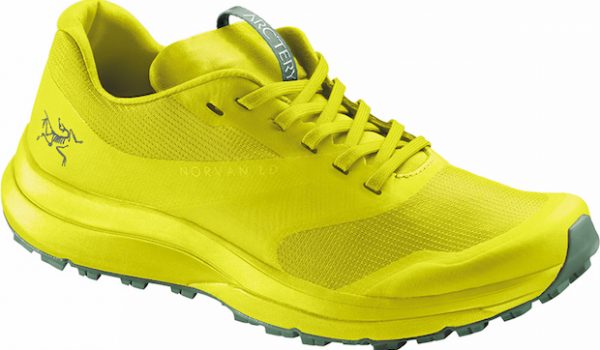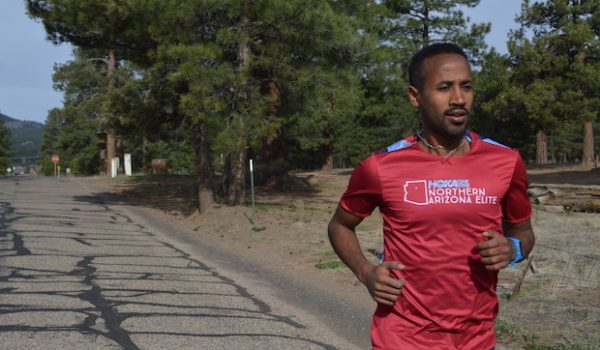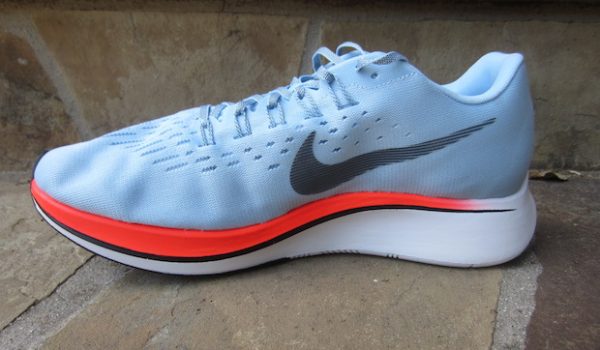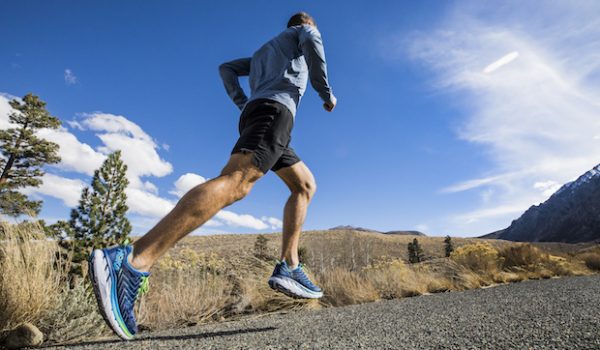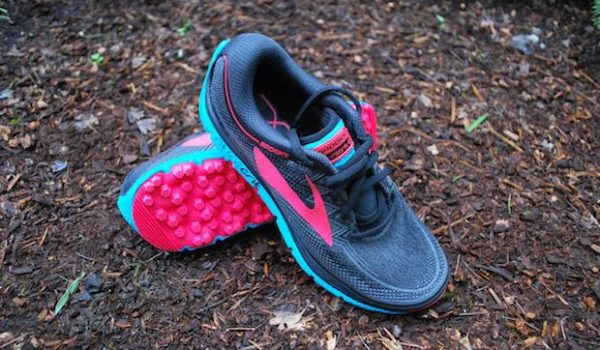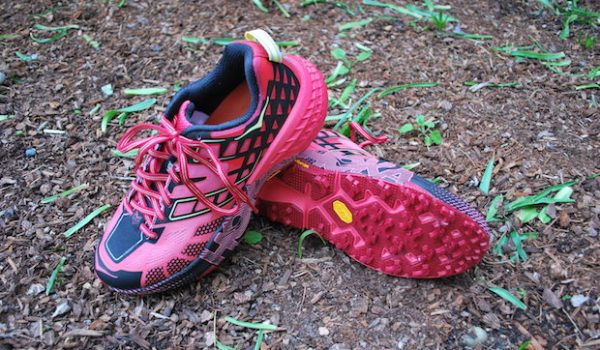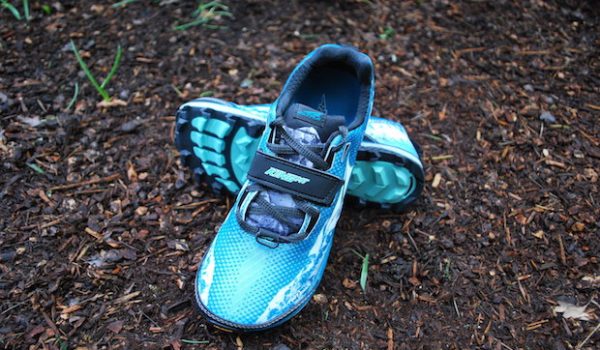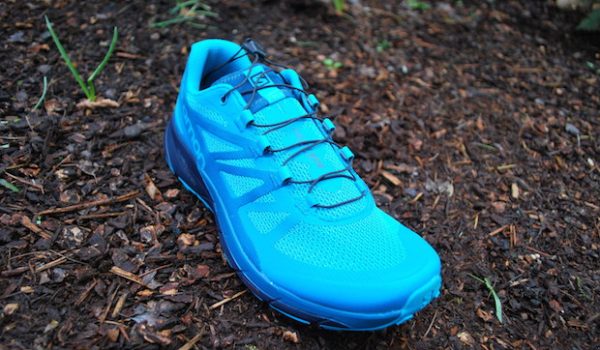One important distinction to note in this category is the shoes selected are NOT specifically designed as racing shoes. Rather, they are shoes that are substantial and durable enough to be used as an everyday trainer, but lightweight and responsive enough that they could also be used for road racing. The prices for these models range from $110 to $150, so consider the value on the number of quality training miles a shoe provides rather than how many seconds it takes off your PR.
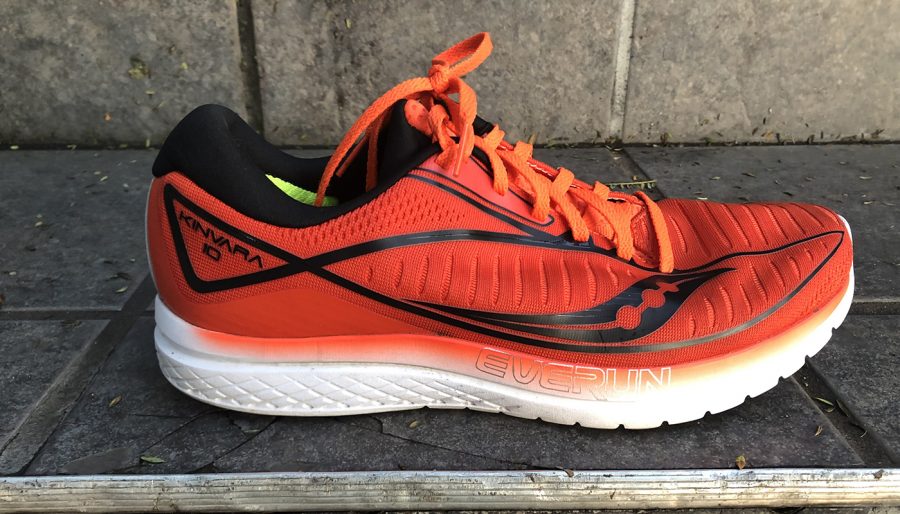
Shoes in this test group are evaluated on the following criteria:
- Fit: How the shoe matches the shape of your foot, and how well it stays in place when you’re running. Is the length true to size? Is the toe box wide enough? Does your heel stay in place when running at speed? Does the bottom of your foot slide around on the midsole? These are all considered for this sub-category.
- Comfort: How does the shoe feel when it’s on your foot? Do you get any hotspots or points of irritation when using the shoes? Do the shoes ventilate well when it’s hot outside?
- Responsiveness: This is where we evaluate the performance of the midsole material. How much energy return is maintained with each impact? Is it easy to transfer your momentum from the rear of the shoe to the front? Does the midsole give you any additional propulsion or toe spring when you push off the ground?
- Ride quality: This incorporates some of the responsiveness issues above, but mainly addresses the overall quality of the ride. Is the transition from heel to toe smooth or sloppy? Are there any asymmetries or design quirks that make the shoe feel weird? We also consider the outsole, and how effective it is at providing traction and transitioning your weight from the rear to the front of the shoe.
- Speed: Simply put, how easy is it to run fast in these shoes? As a general rule, a shoe that is lightweight, comfortable, and has good energy return in the midsole will score high in this category. We also consider what type of speed work each shoe is best suited for; sometimes a great 5K shoe doesn’t have enough resilience to race a full marathon for instance.
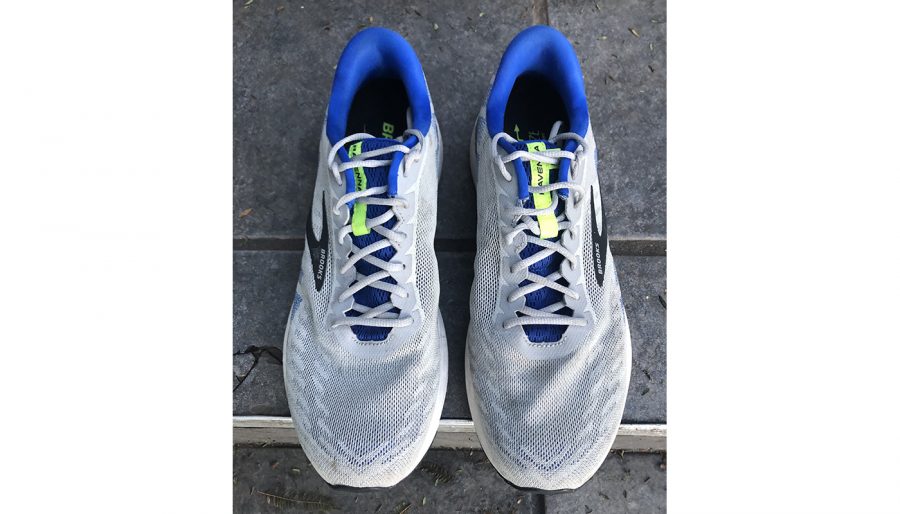
Fit
There was a huge variety in fit this season from the shoes we reviewed. From the wide fitting Hoka Mach 2 to the snug mesh upper of the Mizuno Wave Shadow 2. The Asics DS Trainer 24 was the biggest surprise with new knit upper that despite a pointed look provided a comfortable custom fit. The Hoka Mach 2 was a big shift from traditional narrow fitting uppers with a wider and baggier fit. Testers with wider feet loved the new fit while others had trouble trying to find a snug and secure ride. For those looking for a snugger and secure fit, the 361 Meraki 2 provided that with an upper devoid of overlays. Testers commented they were held securely and those with narrow feet loved how the upper held them. The Saucony Kinvara 10 hit a sweet spot with runners providing increased room in the forefoot. Those who had trouble getting the right fit with previous Kinvara were right at home with the new shape. The Salomon Sonic RA 2 was another shoe that provided increased room in the forefoot. Testers commented it also fit slightly roomier but loved the fit for longer miles. For racing, testers enjoyed almost all of the fit of the Skechers GOrun Razor 3 Hyper with a fast, secure feel. Some, however, were put off by the quick taper of the toe box, which is uncharacteristic for Skechers. Testers noted this went away with time and miles.
Comfort
Many companies have been advancing the uppers of their shoes to make them more and more comfortable. Moving away from hard overlays and rigid uppers, all the shoes have moved to mesh uppers that stretch decently to accommodate different foot shapes. Some companies have even begun to use knit uppers which create a custom and adaptive stretchy fit. The Asics DS Trainer 24 received a complete overall, particularly in the upper with a full knit design. Although the pointed upper concerned some testers, the knit was extremely comfortable and adaptive. All testers reported a custom fit that felt wonderful. However, due to the harsh ride of the midsole, testers rated it as one of the less comfortable shoes reviewed. Despite the comfortable upper, the stiffness of the sole, anything other than speed workouts was found to be difficult. The 361 Meraki 2 suffered from a similar issue. Although the sole was less harsh, the stiff ride and narrow to box turned off some testers. Those with narrow feet enjoyed the upper, but all found the sole more rigid than preferred for a lightweight trainer. At the other end of the spectrum, the Saucony Kinvara 10 was rated highly for comfort. The new mesh upper stretched well with testers feet, disappearing both on and off the run. The heel pods in the rear part of the upper provided a stable hold on the foot without needing an aggressive heel counter.
Responsiveness
Despite all the shoes reviewed being considered lightweight trainers, the responsiveness varied. With different sole designs, midsole materials, flexibility and more, the concept of responsiveness, or energy return can vary even person to person. With new midsole materials, the Saucony Kinvara 10 and Skechers GOrun Razor 3 Hyper both received top marks. Both shoes were both to give great energy return on a variety of surfaces. Despite being on the lighter end of the spectrum, the Hoka Mach 2 and Mizuno Wave Shadow 2 were found to be less responsive. The stiff heel of the Mizuno Wave Shadow 2 provided less energy return than testers would have liked. However, the forefoot was reported to be far more comfortable and smoother. The Hoka Mach 2 suffered from both a loose upper as well as a stiff heel. Although testers found the forefoot meta-rocker to easily roll them forward, the ProFly midsole created harsh landing in the rearfoot.
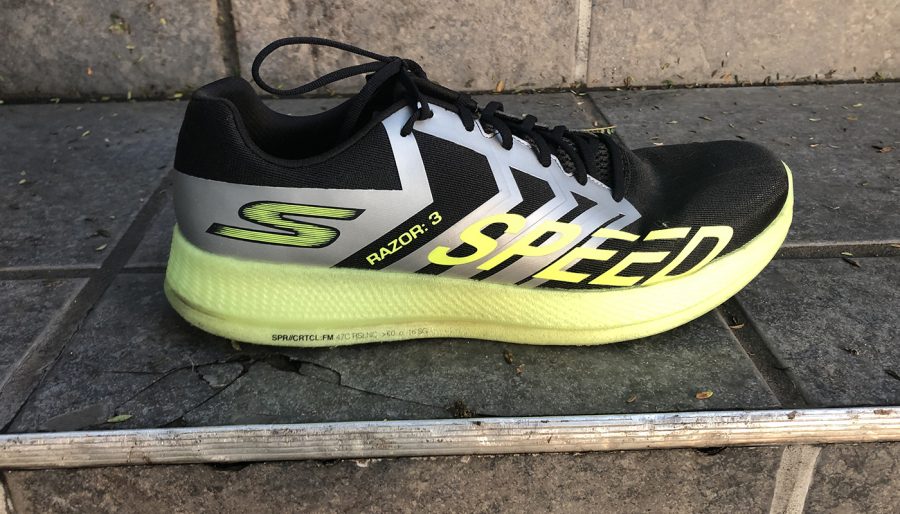
Ride Quality
The Saucony Kinvara 10, Brooks Ravenna 10 and Salomon Sonic RA 2 received top marks from testers for smooth and protective rides. The Saucony Kinvara 10 tied for the fastest shoe rated of the group with a smooth and fast combination of EVERUN and EVA+. Testers noted the Saucony Kinvara 10 worked well for speed days to easy days, providing a protective and lightweight ride. The new longitudinal flex grooves, great forefoot flexibility and adaptive upper provided a ride that kept testers moving at whatever speed they needed. The Brooks Ravenna 10 provided a unique ride thanks to the new guide rails, which provided stability only if testers needed it. The BioMoGo DNA further provided an adaptive ride to whatever speed testers wanted to go. flex grooves provided a smooth, cushioned and snappy toe-off. The Salomon Sonic RA 2 provided the most protective ride for long miles. Although not the fastest shoe, the protection and shock attention provided by the VIBE technology gave a smooth ride kept testers going for long runs on both the road and trail. As a Salomon shoe, the Salomon Sonic RA 2 has deep flex grooves that provide both traction and stability on a variety of surfaces.
Speed
As new midsoles are combined with lighter weight soles, running shoes continue to get faster and faster. The top rating in speed goes to the Skechers GOrun Razor 3 Hyper. A new Hyper midsole provided a fast and responsive ride across a variety of paces. A shoe that all universally reached for during races and speed workouts, the new midsole provided enough pop for both 200m repeats up to marathon pace runs. The Saucony Kinvara 10, with the Everun top sole and lightweight, provided a very speedy ride. Another shoe that testers reached for during workouts and up-tempo runs, the flexible forefoot contributed to fast toe-off. Some shoes in the review, despite being set up to be fast, ended up being weighed down too much to be speedy. The 361 Meraki was not rated as quick due to the heavier weight and sturdy ride. Despite having Quikfoam in the midsole and a carbon fiber plate in the midsole, testers found it to be far better for long easy training runs. Just because a shoe has a new midsole material does not make it fast if it weighs too much.
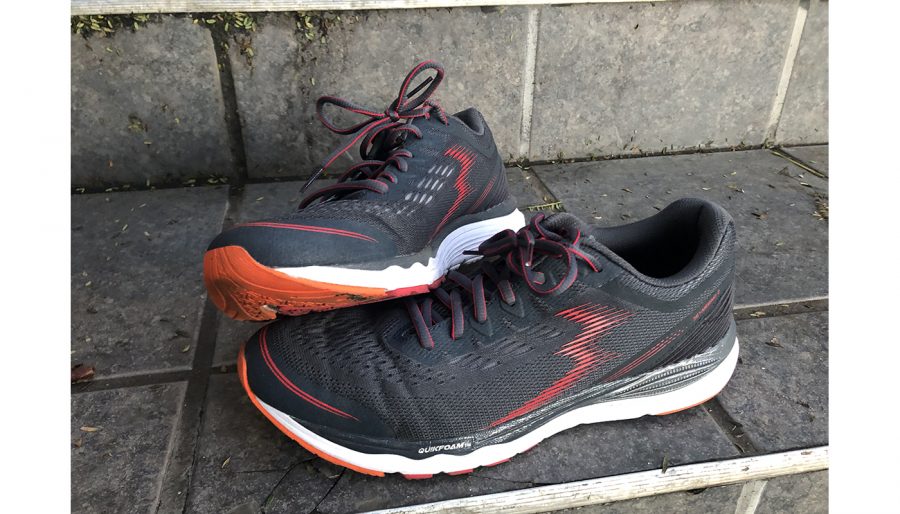
Test Methods
As described above, testing of our lightweight road shoes was performed by a committee of testers, both male and female. Our group consists of six testers who wore the shoes for total distances of approximately 40 to 150 miles. Single runs ranged in distance from three to 26 miles and included casual training as well as speed workouts and road racing. The majority of our testing is conducted on asphalt roads or all-weather tracks, but we occasionally venture onto trails.
One key variable that affects the subjective experience of our testers is the heel to toe drop of a shoe. The shoes in this season’s test group range from 10mm (361 Meraki 2) to 4mm (Saucony Kinvara 10) and the most common drop is a midrange value of 4 or 8mm. Depending on the tester, this variable can make the difference between a smooth ride and one that feels sluggish or awkward. Our testing group contains heel, forefoot and midfoot strikers, and we take this variable into account when assessing the ride quality of a shoe by indicating what type of runner a particular shoe is best suited for.
A big distinguishing characteristic in this category is the midsole material, which has become the “secret sauce” each brand tinkers with to find the magical balance of cushioning, energy return, and durability. Almost all of these material compounds are proprietary to each company, and they are frequently described in buzzwords (Bounce! Spring! Pop!) or claims that are difficult to validate (for example, 33 percent more resilient than traditional EVA). But make no mistake, midsole material makes a huge difference in the overall ride of a shoe.
Many companies seem to be moving away from traditional EVA foam into materials that are inherently firmer and more durable. The Skechers GOrun Razor 3 Hyper is a great example of this, with a new Hyper Burst midsole that will slowly be moving into all their racing and training shoes. EVA typically provides nice cushioning on impact but doesn’t dependably return that energy into forwarding momentum – it’s like running on pillows: the landing is soft, but it’s hard to transition from one step to the next. EVA also has a tendency to break down after a few hundred miles, which in turn dictates the overall lifespan of the shoe. Firmer materials are designed to more effectively transfer ground impact forces into forward-momentum and tend to maintain their shape and function for a longer period of time compared to EVA. The tradeoff is that firmer midsoles often feel less forgiving or less comfortable during casual training miles than regular EVA; consequently, one popular trend right now is to combine a firmer midsole compound with traditional (and softer) EVA to strike an ideal balance of cushioning and responsiveness. The 361 Meraki 2 is an example of this with a Quikfoam topsole and a traditional EVA sole underneath to balance out the responsive ride with some stability.
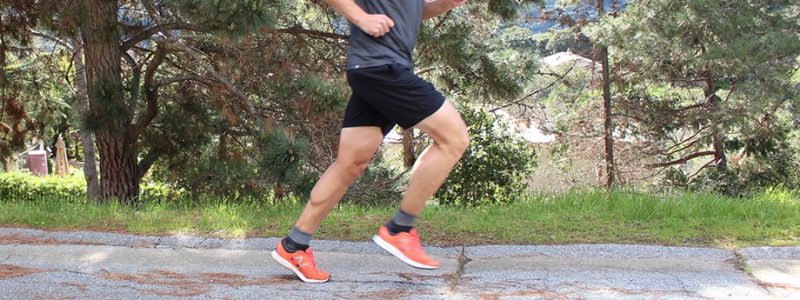

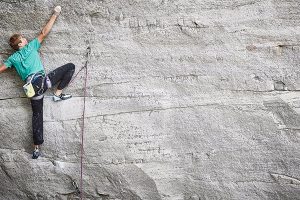
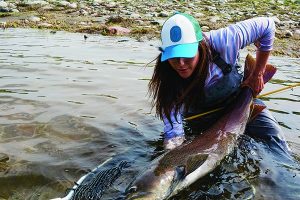

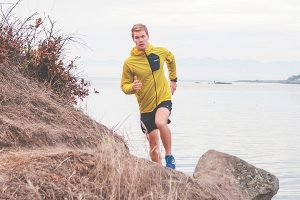







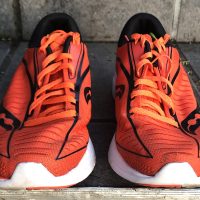

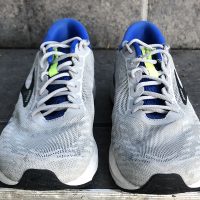
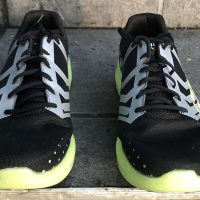
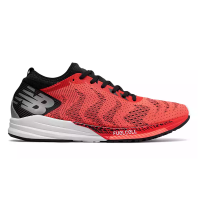
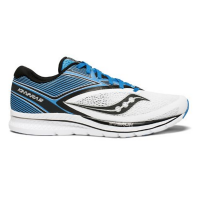

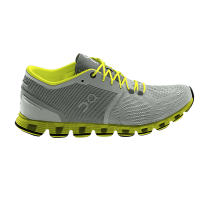
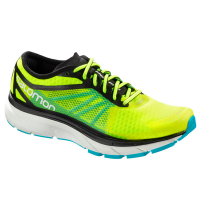
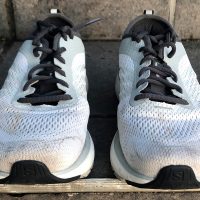
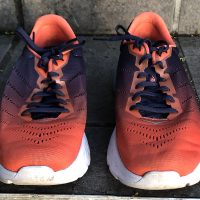

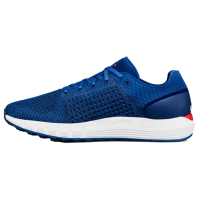
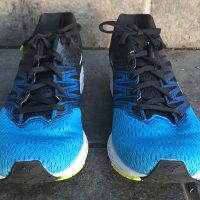
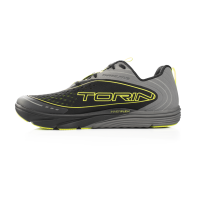
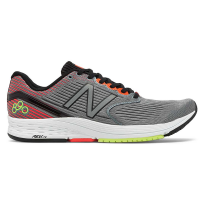
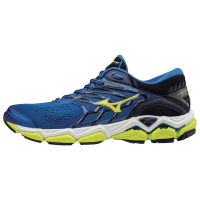
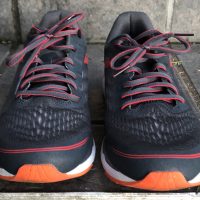
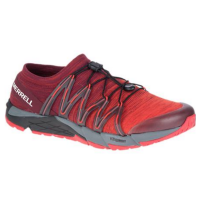
 95
95 